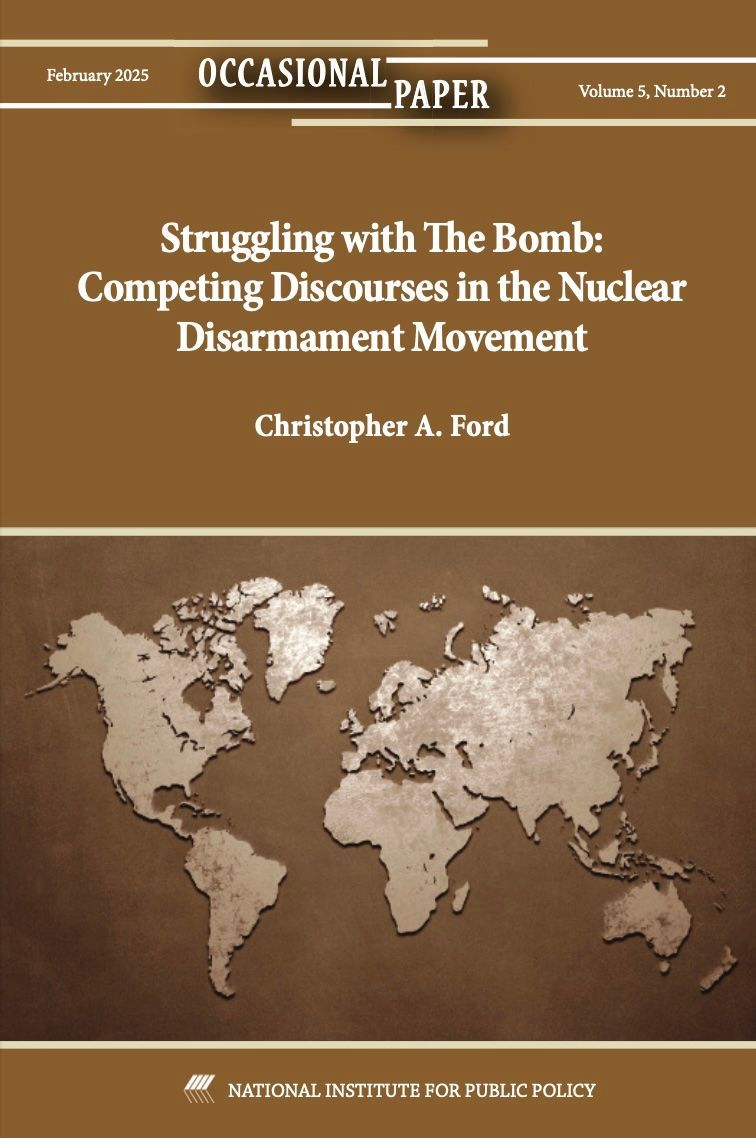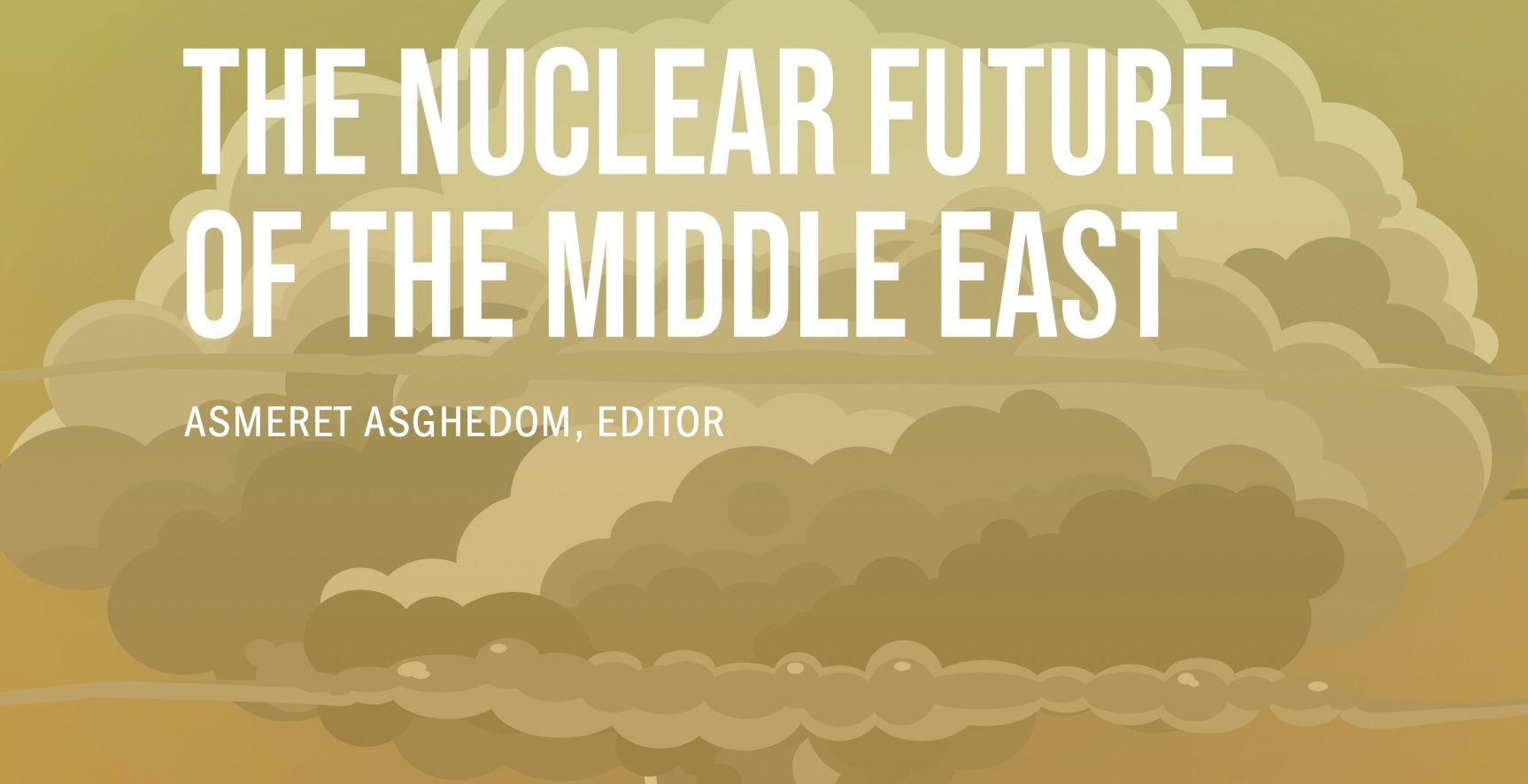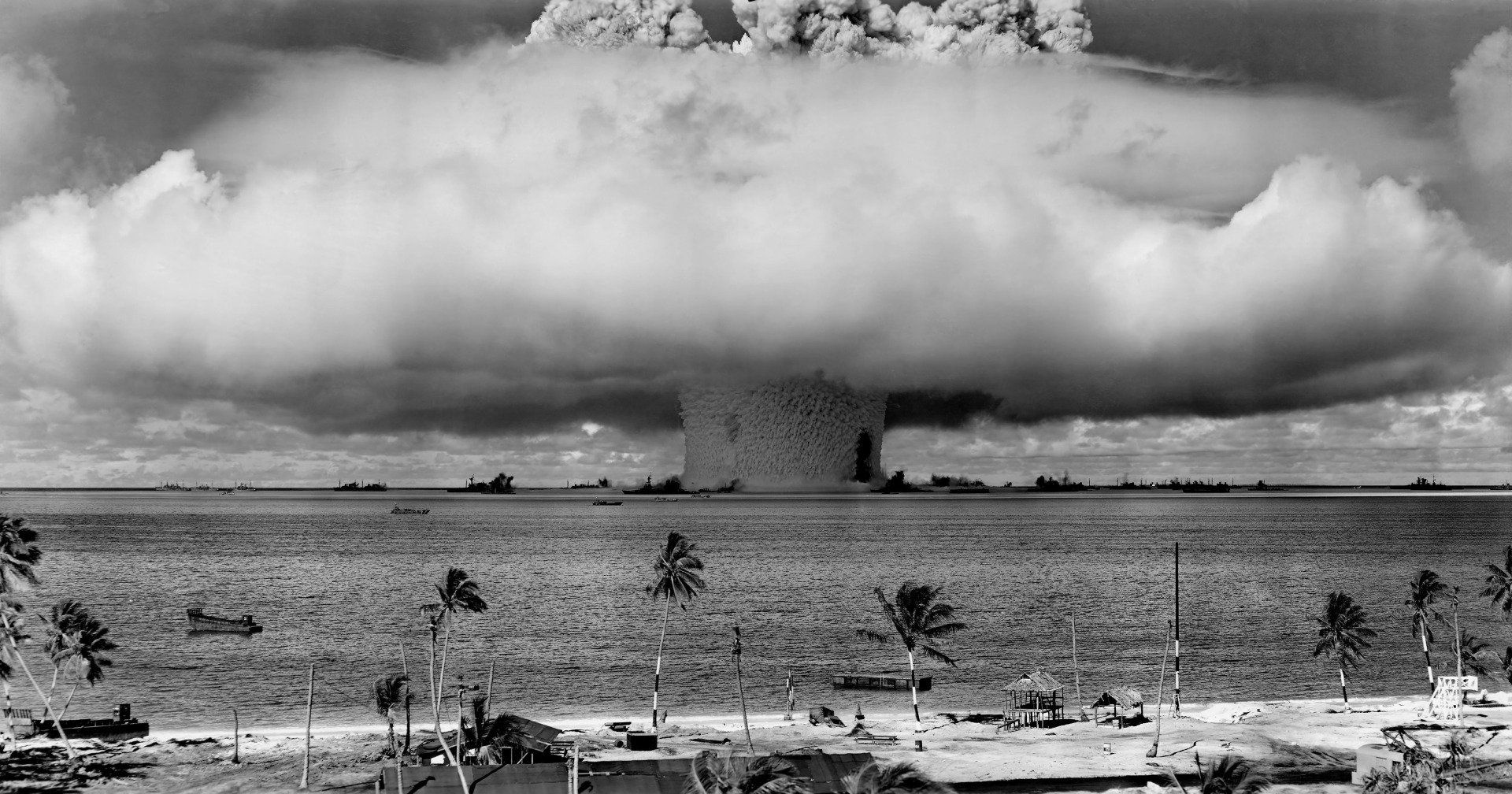The Hon. Christopher A. Ford
New Paradigms Forum -- International Security Policy Since 2009
Reimagining Cooperative Threat Reduction for Strategic Competition
Below is an edited version of the remarks Dr. Ford prepared for the conference on “The Importance of Cooperative Threat Reduction Programs in 2022 and Beyond” held by CRDF Global in Rosslyn, Virginia, on June 23, 2022.
First of all, to Ken Myers and Tom Callahan, thank you for inviting me to this discussion about the future of the Cooperative Threat Reduction (CTR) program. I shall just be offering my own personal opinions today, and do not speak here for anyone other than myself. Nevertheless, this is an intriguing topic, for I think we really are at an important inflection point at which some “reimagining” of CTR is probably in order.
Cooperative Threat Reduction, of course, has a long and illustrious history. Indeed, since the original legislation by that name authored by Senators Richard Lugar and Sam Nunn in 1991 – in response to the collapse of the USSR and the danger that weapons of mass destruction (WMD) and related materials and technology might fuel a horrific explosion of WMD proliferation – CTR has had great successes in accounting for, consolidating, securing, and indeed eliminating WMD, as well as in reducing the incentives that might otherwise be felt by WMD scientists in the former Soviet Union to take their services elsewhere.
To be sure, not everything went perfectly. As U.S. officials warned even during the Clinton Administration, Russian assistance and weak export control enforcement still ended up allowing Iran to acquire Russian help that was “crucial” to Tehran’s missile program and nuclear weapons efforts. And while it’s certainly good that the former USSR’s nuclear weapons scientists were enticed not to decamp en masse for Tehran, Baghdad, or Pyongyang, it’s hard not to wish so many of them hadn’t used our subsidies to remain in the nuclear weapons business at home in Russia. I’m very glad more didn’t leave, mind you, but I’d sure be happier if they had switched to a different line of work entirely, instead of keeping the Russian nuclear weapons sector alive during the fallow years and providing a talent pool that the Putin regime could later leverage as it refused to honor the nuclear disarmament promises Moscow made and obligations it undertook in the late 1980s and early 1990s.
But nothing ever goes perfectly in this world, and don’t mistake my words as an indictment of CTR. We are all much safer today than we would have been without the money, effort, talent, and hard work that has gone into CTR projects over the last 30 years. CTR’s list of accomplishments in securing and even eliminating many of the world’s most dangerous weapons and materials is extraordinarily impressive. And I thus thank and congratulate those involved CTR’s important work over the years – including my old Senate staff confrere, CRDF Global’s own Ken Myers – for all that they have done.
That said, it is nonetheless worth thinking about where CTR goes next.
CTR was, of course, initially an emergency expedient in response to the proliferation potential of the former Soviet arsenal as the USSR collapsed, and to realizations about just how careless and irresponsible the Kremlin had become in controlling and securing WMD-related items and materials. In its DNA, as it were, the CTR program is an institution of a post-Cold War security environment in which strategic competition between well-established major powers seemed to have waned, and in which preventing new-power proliferation threats and WMD-related terrorist threats lay at the center of the international security agenda.
To be sure, CTR’s nonproliferation agenda remains extremely important. Wherever they may be, WMD-related materials, equipment, and know-how need to be secured against loss, theft, or misuse, and I have no doubt that much still remains to be done around the world in this regard.
Even after the Russians rejected further CTR cooperation in 2013, for instance, the Defense Threat Reduction Agency (DTRA) continued to do good work elsewhere, such as in its Biological Threat Reduction Program (BTRA). And it is very important to ensure that no more dangerous and bellicose regimes like North Korea and Iran – not to mention non-state actors such as terrorist organizations – are able to take advantage of lax security and porous export control regimes to acquire WMD capabilities. Accordingly, I hope that whatever “CTR 3.0” ends up looking like, Cooperative Threat Reduction programming will continue such such work.
Yet I think that we need to do some “reimagining” nonetheless. The world of relatively benign and cooperative great power relationships that U.S. and other Western leaders felt they inhabited after the end of the Cold War – and which they seem to have assumed would continue in perpetuity – is unfortunately notthe one we live in today.
Moreover, in a world in which nuclear-armed revisionist near-superpowers ruled by brutal thugs threaten their smaller neighbors and commit genocide on each end of the Eurasian landmass in ways unprecedented since Adolf Hitler was alive, WMD proliferation to nasty small fry no longer sits unchallenged at the top of the global threat list as it did during most of CTR’s history.
My question for this audience, therefore, is: can we “reimagine” CTR in ways that will help with strategic competition threats? Can we find ways for the experience, talent, and methods CTR developed against proliferation threats also to advance international security against threats from great power adversaries?
I think we can, and I think we should.
I’m very encouraged by what the other panelists have said so far about CTR’s future in this regard. At the Bureau of International Security and Nonproliferation (ISN) when I was there (2018-21), it was one of my signature policies as Assistant Secretary to leverage ISN’s nonproliferation-related skills and capabilities (e.g., national security export controls on sensitive technologies, the dismantling of proliferation networks, the imposition of sanctions, and global capacity-building programming to help U.S. partners be better partners) in support of U.S. competitive strategy against great power adversaries, and I’d love to see CTR do likewise.
Beyond what has been said already, however, I’d like to offer a few additional thoughts.
To build on their remarks, therefore, let me offer three potential additional ways in which a “New Model CTR” could help.
- First, a great deal of work needs to be done around the world in helping friendly states “harden” themselves against cyber intrusion and potentially disastrous cyber attack. U.S. intelligence officials have been warning for years, for instance, that Russia and China have both been building up their cyber capabilities, not just for espionage or technology theft – though that’s of course been occurring on an epic scale too – but also as a tool useful both for strategic coercion and for warfighting as a result of its potential to cause disruptive and even catastrophic cascading effects against civilian critical infrastructure.
Cooperative Threat Reduction could develop a new line of work in cybersecurity and cyber-resilience capacity-building, thus supercharging those U.S. and allied efforts already underway and helping make the many countries of the world targeted by the great power revisionists much more able to protect themselves, and more resilient in the face of cyber assault.
- Nor, in fact, need such CTR capacity-building programming limit itself specifically to the cyber arena. After all, civilian critical infrastructures around the world face many threats – not least that of collapse under shocks and stresses presented by natural disasters, especially as such infrastructures face increasing burdens and strains as a result of climate change. As my second point, therefore, I also envision a potential future for CTR in capacity-building programming devoted to critical infrastructure resiliency in the physical sense.
This could provide tremendous benefits to people all around the world, truly “reducing threats” through cooperative engagement. And because brittle and stressed infrastructures are also ones that are vulnerable to deliberate shocks as well as natural ones, prioritizing such work in friendly states threatened by potential Russian or Chinese aggression could actually strengthen deterrence as well. A country the civilian infrastructure of which is more resilient and can be more easily restored in the event of attack is a country that will be less easily cowed by the threat of aggression.
- Third, there may be things that CTR capacity-building programming can do in helping reduce China’s ability to exploit and manipulate the states of the developing world through usurious loans and infrastructure projects that entangle those countries in webs of debt and dependency that Beijing uses to extort political concessions, undermine their sovereignty, and rope them into Sinocentric vassalage.
If such relationships with China are undertaken in full awareness of the consequences – or perhaps just because one rather likes the bribes and kickbacks that Chinese salesmen may offer – then I suppose there may not be that much CTR could do to help.
But what if, when presented with too-good-to-be-true offers by China’s globe-trotting snake-oil salesmen, leaders in the developing world were better equipped to evaluate projects using cutting-edge, data-driven cost-benefit models of technical and economic merit? What if they were better equipped to judge “Belt and Road” proposals on the basis of international “best practices” for environmental, safety, and social justice impact? What if they were better equipped to oversee such projects with an effective regulatory apparatus that has the interests of their people in mind rather than merely the profits and strategic calculations of Communist Party planners in a foreign capital thousands of miles away?
I suspect that CTR-style capacity building programming could have a useful role to play in helping here, too – and in ways that would significantly benefit populations in the developing world, while also reducing the global security threats presented by what one might call “neoimperialism with Chinese characteristics.”
In sum, while the traditional nonproliferation mission of CTR programming remains important, today’s threat-filled world is notably different from the one into which CTR was born. The threats CTR was established and structured to reduce have been joined by others that badly need to be met as the geopolitical pathologies of great power revisionist aggression have once more reared their heads.
I believe CTR can help with these new threats – which are in some respects quite old sorts of threats, merely now coming all too unfortunately back into the foreground – by leveraging its skills and experience against these challenges as well.
Thank you.
-- Christopher Ford



Copyright Dr. Christopher Ford All Rights Reserved





